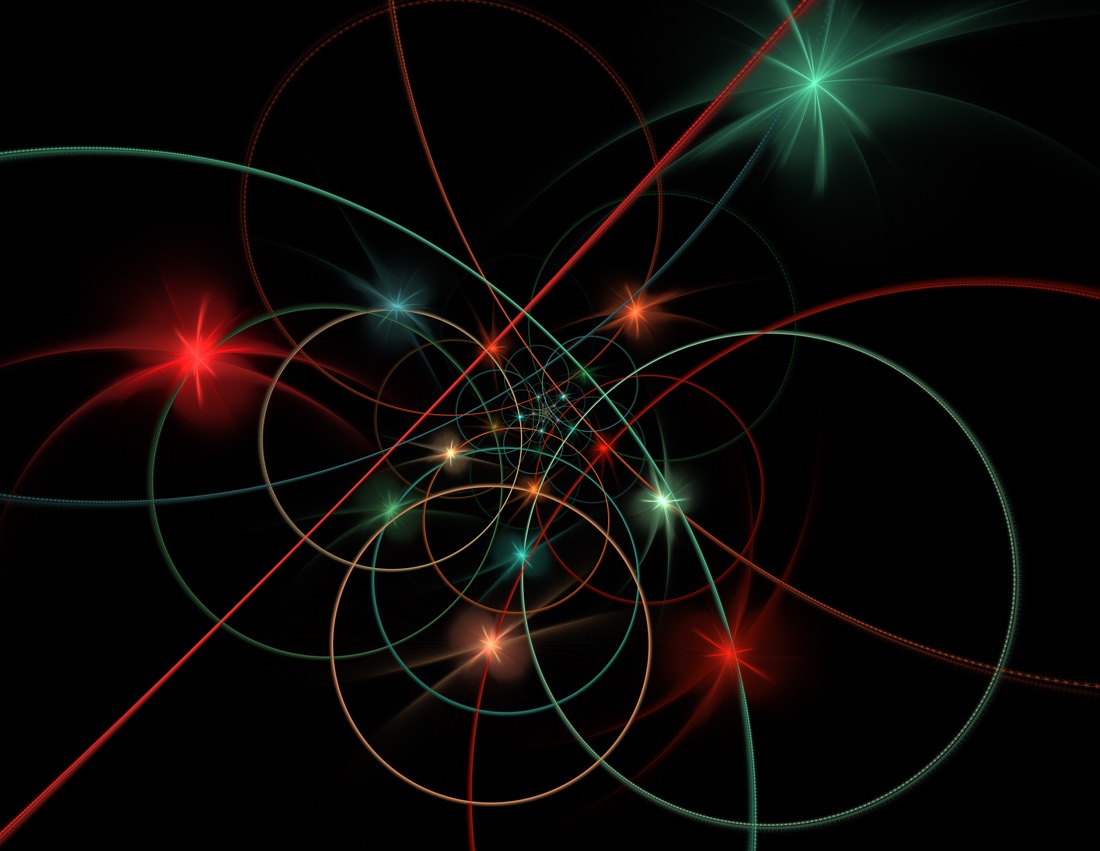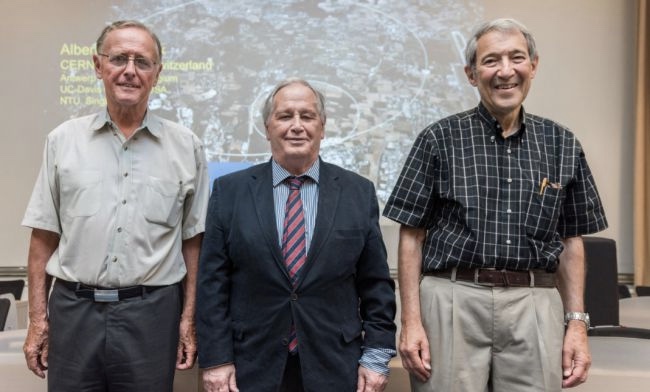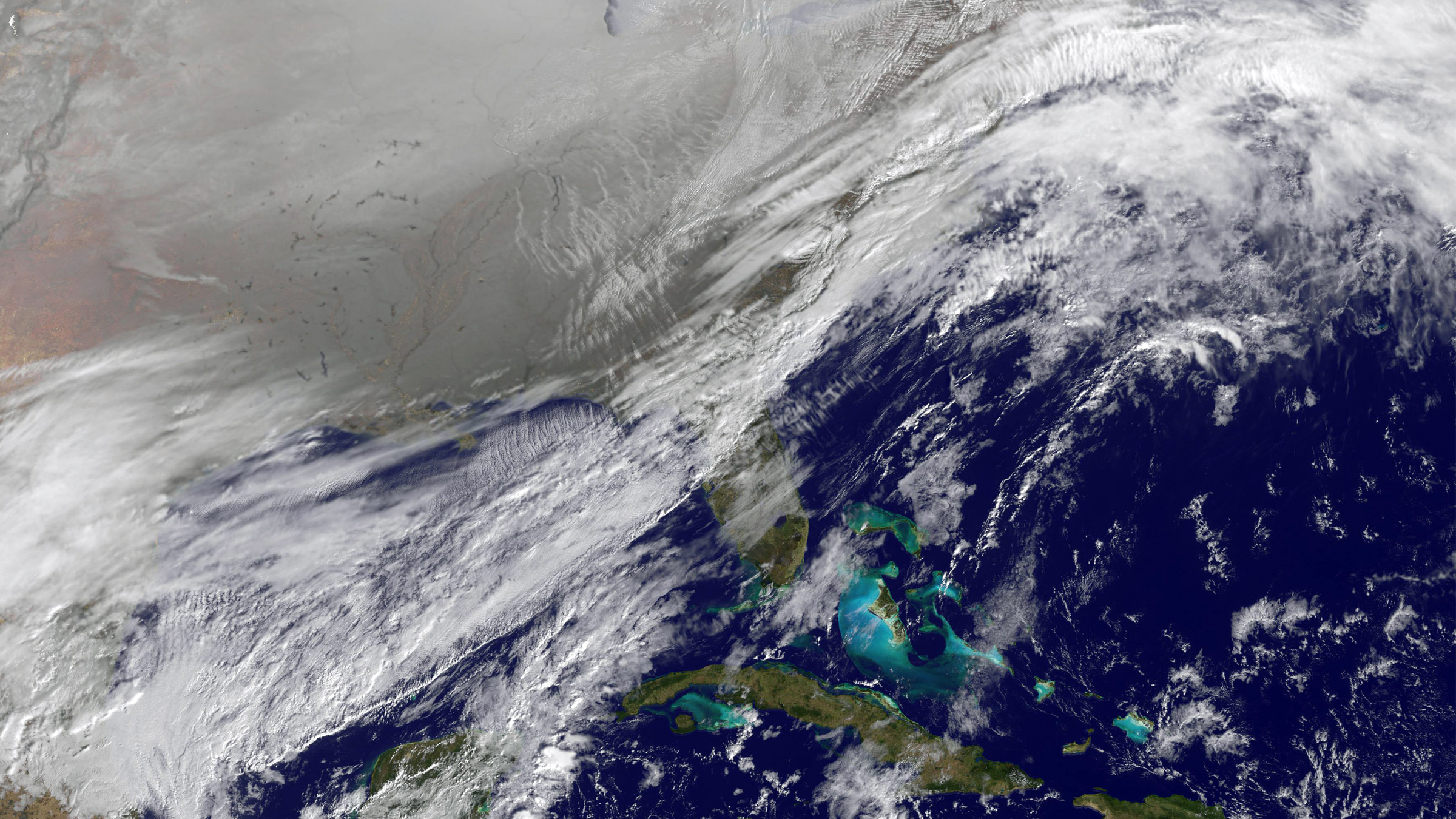
The three architects of supergravity are getting some high-profile recognition, more than four decades after they developed the influential theory.
Sergio Ferrara, Daniel Freedman and Peter van Nieuwenhuizen will receive a $3 million Special Breakthrough Prize in Fundamental Physics for their formulation of supergravity in 1976, Breakthrough Prize representatives announced yesterday (Aug. 6).
"The discovery of supergravity was the beginning of including quantum variables in describing the dynamics of spacetime," selection committee chairman Edward Witten, a theoretical physicist at the Institute for Advanced Study in Princeton, New Jersey, said in a statement. "It is quite striking that Einstein's equations admit the generalization that we know as supergravity."
Related: The Universe: Big Bang to Now in 10 Easy Steps
The road to supergravity
In the 1960s and '70s, researchers developed the Standard Model of particle physics, which describes three of the four known forces of nature — electromagnetism and the strong and weak nuclear forces.
The Standard Model has been incredibly successful over the years. For example, it predicted the existence of the Higgs boson, which was discovered in 2012.
Bosons, by the way, are one of the two types of known particle, along with fermions. The two classes are distinguished by their divergent "spins," or angular momentum. Fermions, which include quarks, leptons and all composite particles, have half-integer spins — values such as 1/2 and 1 1/2. The Higgs particle, gluons and other bosons have integer spins — 0, 1 and so on. This may seem like a minor distinction, but it causes huge differences in their behavior. For example, fermions make up "normal" matter (as opposed to dark matter, which comprises 85% of the material universe but remains mysterious; nobody knows what it's made of), and bosons carry forces.
Get the world’s most fascinating discoveries delivered straight to your inbox.
The Standard Model is not complete, however. For starters, it doesn't deal with the fourth fundamental force, gravity, which is described by Albert Einstein's theory of general relativity. In addition, the actual masses of many particles are far lower than those predicted by the model.
So physicists have kept working to improve the Standard Model. One of the innovations came in 1973 — the concept of "supersymmetry," which posits that each of the known particles has an undiscovered partner. Specifically, each boson is paired with a "superfermion" and each fermion with a "superboson."
Like the Standard Model, supersymmetry initially didn't include gravity. But Ferrara, Freedman and van Nieuwenhuizen changed that.
The trio's supergravity work began in 1975, with discussions between Ferrara and Freedman at the École Normale Supérieure in Paris. These two soon brought in van Nieuwenhuizen, who was already working on quantum gravity at Stony Brook University in New York.
Together, the three devised a supersymmetry theory that included the gravitino, the supersymmetric partner of the graviton, which is the hypothetical boson that mediates the gravitational force.

The researchers wrote a new computer program to perform the final calculation, which was too difficult to do by hand, van Nieuwenhuizen said. This calculation included about 2,000 terms, all of which needed to end up being zero for their new theory of supergravity to hold.
As the computer crunched the numbers, it spat out these terms in batches of 100 or 200, van Nieuwenhuizen said. The zeros kept coming, and coming, and coming. Finally, after several hours, the final batch came through: All zeros, once again.
Surprisingly, elation didn't wash over van Nieuwenhuizen in the wake of this big moment. The researchers had been working on the theory every day for months, he said, so the immediate emotion — for him at least — was a complex and layered one colored by accumulated fatigue.
"I compare it to the scientific equivalent of post-natal depression," van Nieuwenhuizen told Space.com. "You produce something and it's out there, and you are left behind, exhausted."
Related: Nobel Prize in Physics: 1901-Present
A big impact
Supergravity serves to extend, not replace, general relativity. For example, Witten incorporated supergravity in his 1981 proof of the positive energy theorem in general relativity — work for which he received the prestigious Fields Medal in 1990.
Supergravity has influenced theoretical physics deeply over the past four decades. For example, it showed that supersymmetry is a viable explanation for the phenomena we observe in the universe — including gravitational phenomena. And supergravity has become an integral piece of string theory, a famous "theory of everything" candidate that postulates that what we observe as particles are actually tiny, vibrating strings.
"When we think of the great works of the human imagination, we often mean art, music and literature," Yuri Milner, one of the founders of the Breakthrough Prize, said in the same statement. "But some of the most profound and beautiful creations are those of scientists. Supergravity has inspired physicists for decades and may contain deep truths about the nature of reality."
Gravitinos may also be a constituent of dark matter — perhaps the prime constituent. But we still don't know if that particle, or any of the other hypothesized superparticles, actually exists; none have been observed to date.
That may just be a reflection of the limitation of our particle accelerators: We might have to build something significantly bigger and more powerful than Europe's Large Hadron Collider (LHC), which revealed the Higgs boson.
If we do that, and the gravitino still remains elusive, then supergravity may just be a beautiful theoretical idea, and "not a theory of Nature," van Nieuwenhuizen said.
Long-delayed recognition
Ferrara and van Nieuwenhuizen both said the Breakthrough Prize news came as a shock, given that the trio developed supergravity 43 years ago.
"We were really surprised, because this is ancient work," said Ferrara, who's based at UCLA and the European Organization for Nuclear Research, which operates the LHC. (The organization is known by the French acronym CERN.)
"Of course, we were happy to get this prize, and we were proud to be recognized by this prestigious committee," he told Space.com.
Freedman, who was previously based at MIT but is now a visiting professor at Stanford University, had an emotional response when the Breakthrough Prize people called to give him the news.
"When I put the phone down, I cried," he told Space.com. "I was overwhelmed. It's a fantastic capstone to my career."
Ferrara is Italian, Freedman is American and van Nieuwenhuizen is Dutch. The trio will officially receive the prize on Nov. 3, at the 2020 Breakthrough Prize ceremony at NASA's Ames Research Center in Silicon Valley. The ceremony will also honor winners of the annual Fundamental Physics Prize, and the winners of the Breakthrough Prizes in Life Sciences and Mathematics.
This will be the fifth Special Breakthrough Prize in Fundamental Physics to be awarded. Previous winners are Stephen Hawking; seven CERN scientists integral to the discovery of the Higgs boson; the Laser Interferometer Gravitational-Wave Observatory (LIGO) Collaboration, which made the first-ever direct detection of gravitational waves; and Jocelyn Bell Burnell, for her 1967 discovery of pulsars.
- Wacky Physics: The Coolest Little Particles in Nature
- Gallery: Dark Matter Throughout the Universe
- 8 Baffling Astronomy Mysteries
Mike Wall's book about the search for alien life, "Out There" (Grand Central Publishing, 2018; illustrated by Karl Tate), is out now. Follow him on Twitter @michaeldwall. Follow us on Twitter @Spacedotcom or Facebook.


